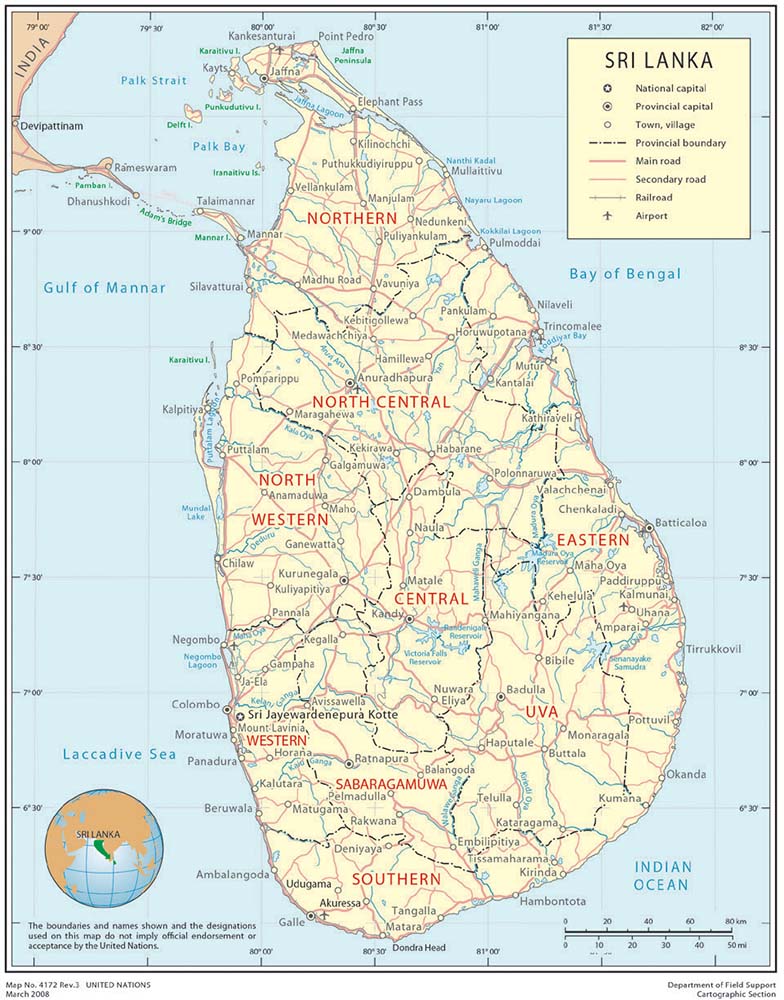A Bridge over Ancient Waters
Separating India and Sri Lanka, the shallow waters around the Palk Strait are perhaps best known for a chain of shoals that have featured prominently in geological writings and religious traditions. As a result, technological interventions around this strategically important region have had to grapple, time and again, with the cultural dimensions of these shoals. If the perceived sanctity of these shoals has appeared to facilitate technological interventions in some cases, it has emerged as a serious obstruction in others.
In 1871, shortly after the Suez Canal was inaugurated, members of the Council of the East India Association met in London to discuss the possible construction of another canal further east in the Palk Strait. 1 At a time when steamer traffic in the Indian Ocean had increased considerably, members of the association took turns to highlight the significant gains to be made by cutting a shipping channel between India and Ceylon. They also highlighted the ease with which this could be achieved. In all, it was calculated that such a channel would reduce a return journey between Bombay and the eastern Indian Ocean by almost 720 miles, leading to a 4% reduction in time and expense. 2
Through the course of the late 19th century, however, as Ceylon’s booming tea industry increasingly began to depend on the migration of indentured labor from southern India, the colonial state became less interested in deepening the divide between India and Ceylon. Instead, it began to explore ways to bridge the physical distance between the two through the construction of “a railway line over the sea.” 3 From its inception, those lobbying for the line drew connections between the proposed railway bridge and the limestone formations, known as Adam’s Bridge, that had been considered hindrances to navigation. The bridge would be partly built on the shoals themselves, and legends surrounding these formations would also help draw investments toward the project. While Adam’s Bridge appears in Islamic and Buddhist accounts as well, its apparent associations with the bridge in the Hindu epic the Ramayana would gain prominence in this process. A number of news reports began their analysis of the proposed bridge by recalling the episode in the epic where Hanuman, the monkey god, builds a bridge across the Palk Strait to rescue Sita. When a part-ferry, part-railway line was ultimately inaugurated in 1914, colonial officials similarly used the occasion to emphasize the bridge’s mythical past, quoting passages from the Ramayana and assuming the names of characters from the epic. With the opening of this line, senior officials proclaimed, history was now following in the footsteps of mythology.

Fig. 1: Map of Sri Lanka, depicting Adam's Bridge and surrounding areas in the upper left (United Nations Map no. 4172 Rev.3, March 2008)
Though the bridge was only partly completed and the railway line never quite became the grand success that its promoters had envisioned, these invocations of mythology would have far-reaching consequences. For instance, when the Indian government began to revive plans for a shipping channel through this very area in the final decades of the 20th century, some Hindu groups rose in protest, insisting that that the shoals were inviolable due to their associations with the ancient bridge mentioned in the Ramayana. 4 A century earlier, that tradition had been narrated repeatedly in order to facilitate a colonial public works project by endowing it with much-needed grandeur. In the hands of 21st-century Hindu nationalists, it turned into a historical fact that would serve to prevent further infrastructural interventions. The line between fact and fable, which had begun to dissolve in the first quarter of the 20th century under colonial rule, has collapsed in recent years, to such an extent that in 2017 the Indian Council of Historical Research agreed to conduct archaeological excavations to investigate whether the shoals are indeed man-made structures. In the meantime, all plans to construct a shipping channel by dredging these shallow waters have been abandoned.
The pivotal position occupied by the Palk Strait as a possible bridge between India and Sri Lanka, but also as a central node between western and eastern Asia, demonstrates the multiple ways in which transnational and regional linkages have been both imagined and executed historically. At the same time, the recurrent invocations of mythology to both enable and disable infrastructural interventions in this region at different points of time highlight the extent to which local contingencies have shaped this process in particular ways.
Devika Shankar, Department of History, University of Hong Kong, devika@hku.hk